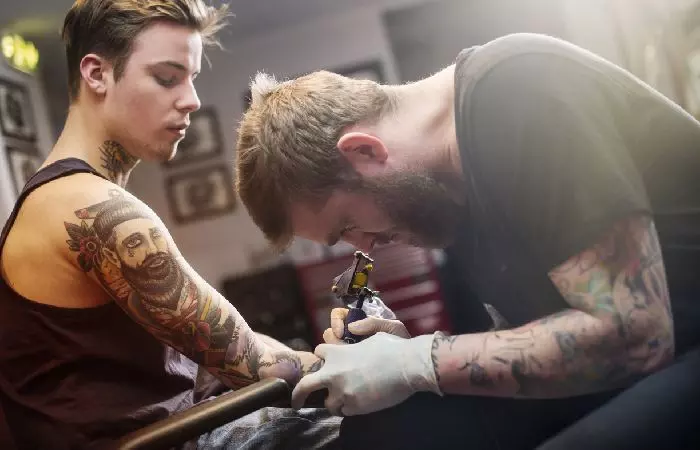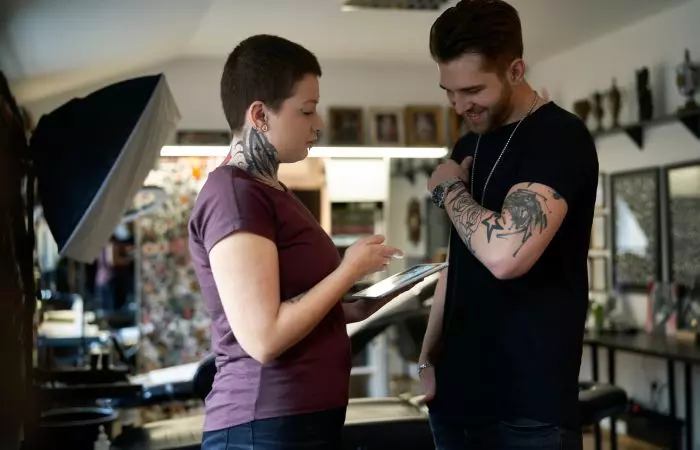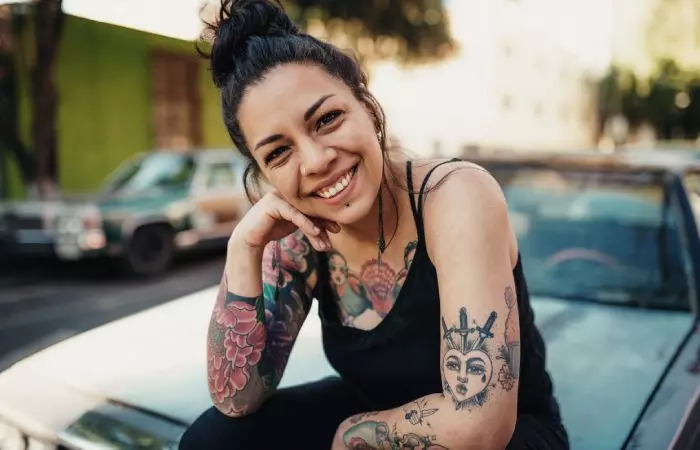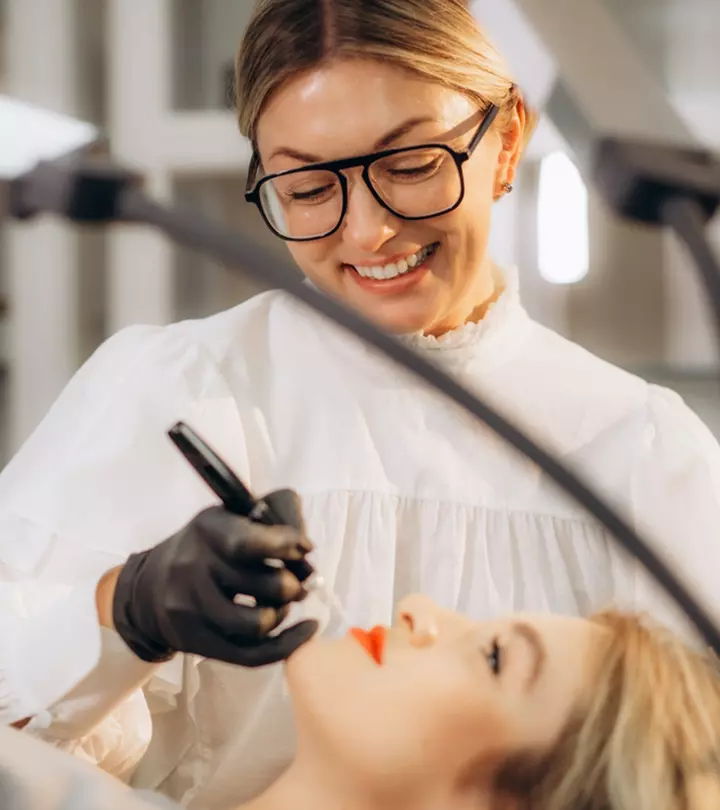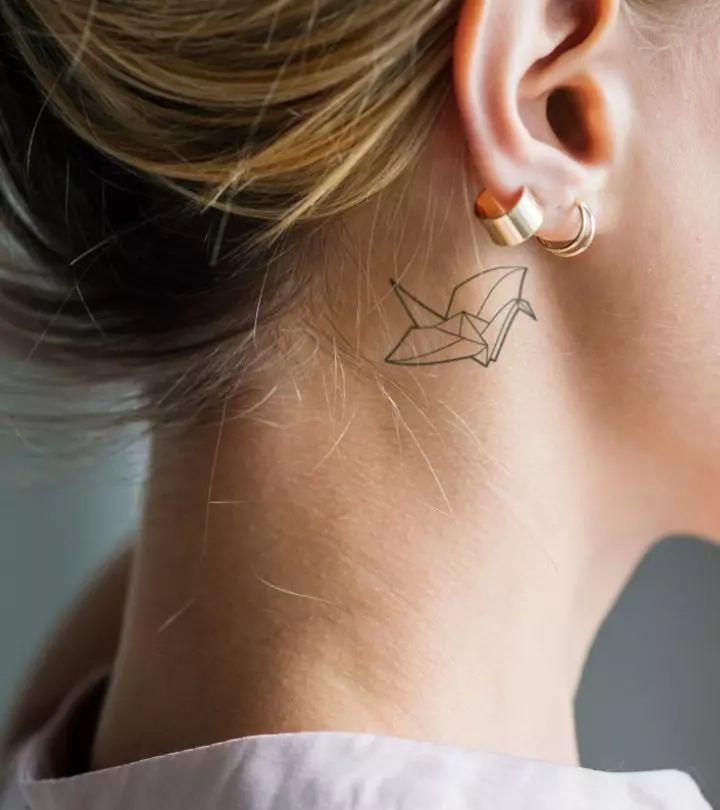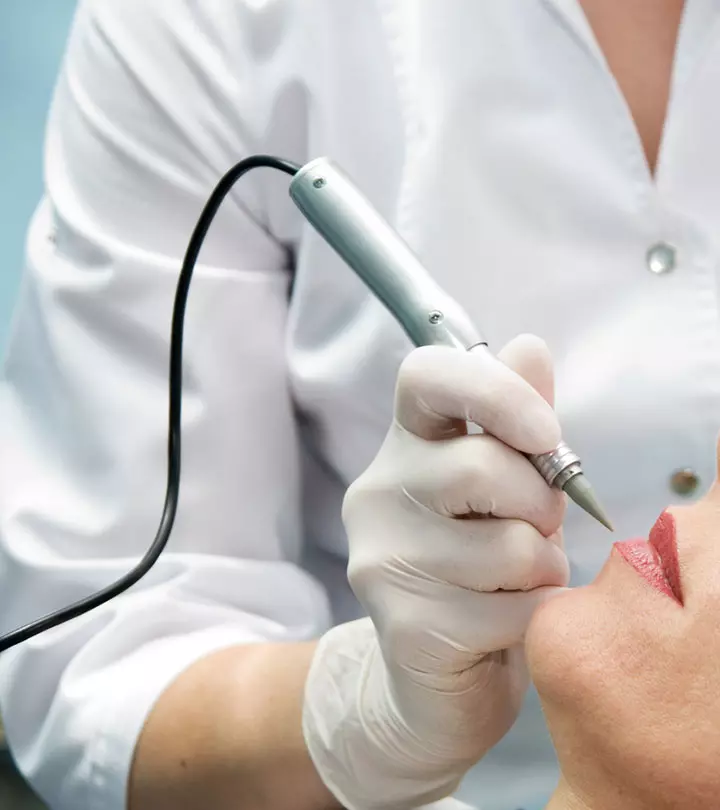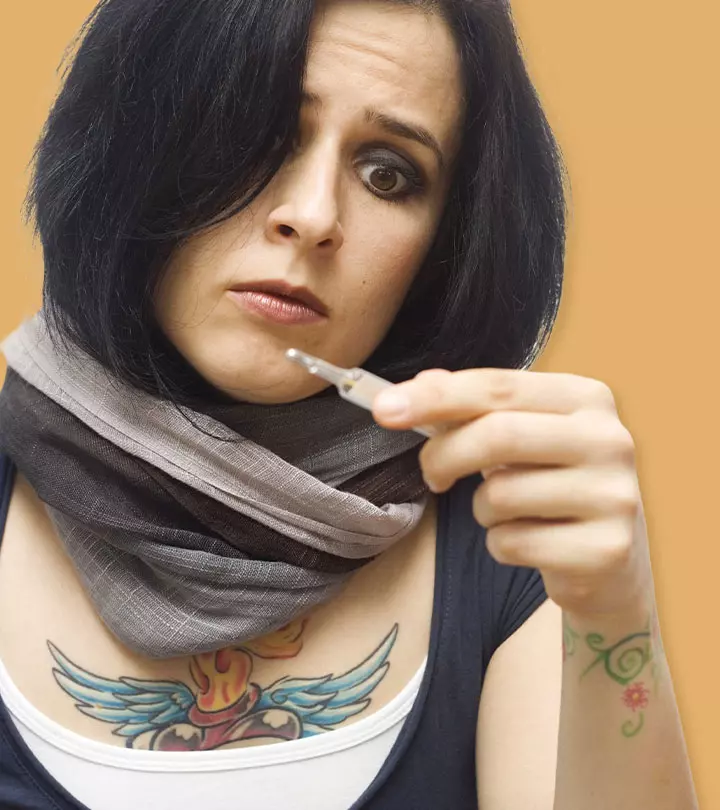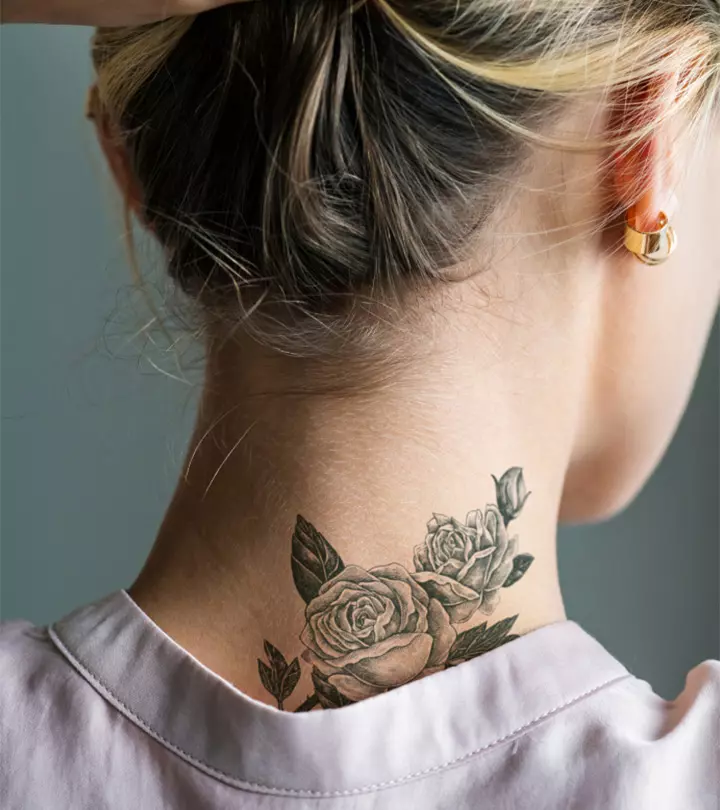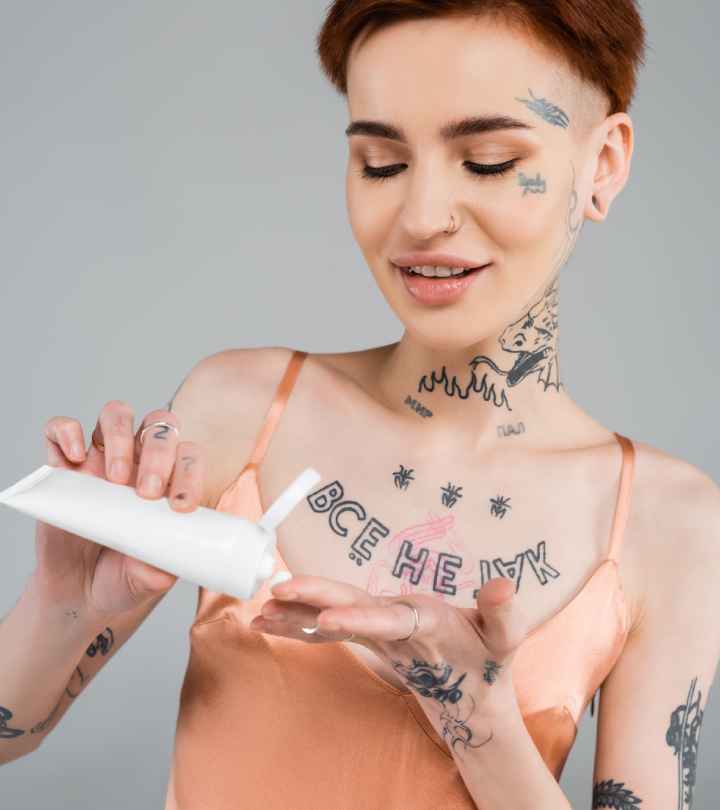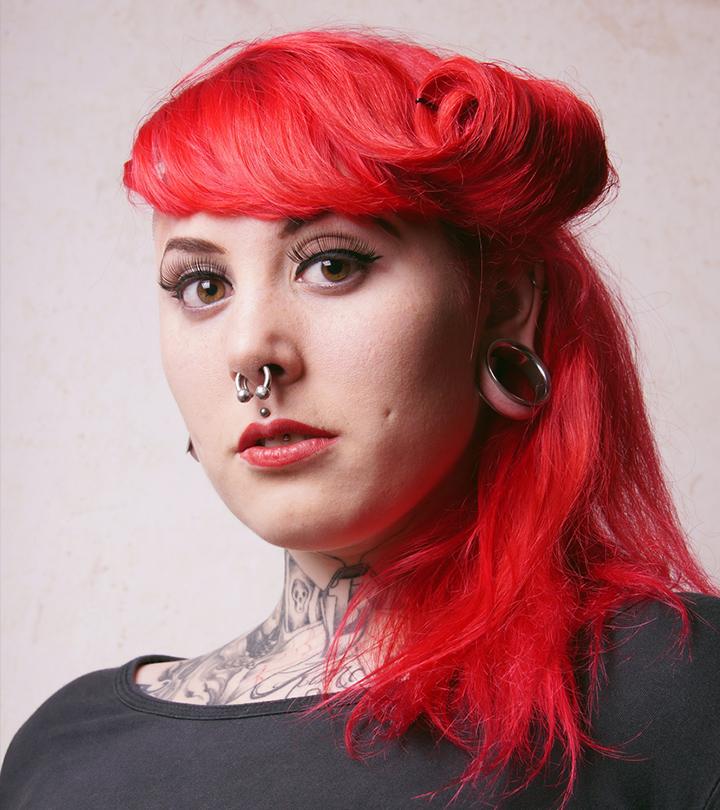How Long Does It Take To Get A Tattoo? What To Expect
Small or large, simple or intricate, tattooing takes some time to tell your story right.
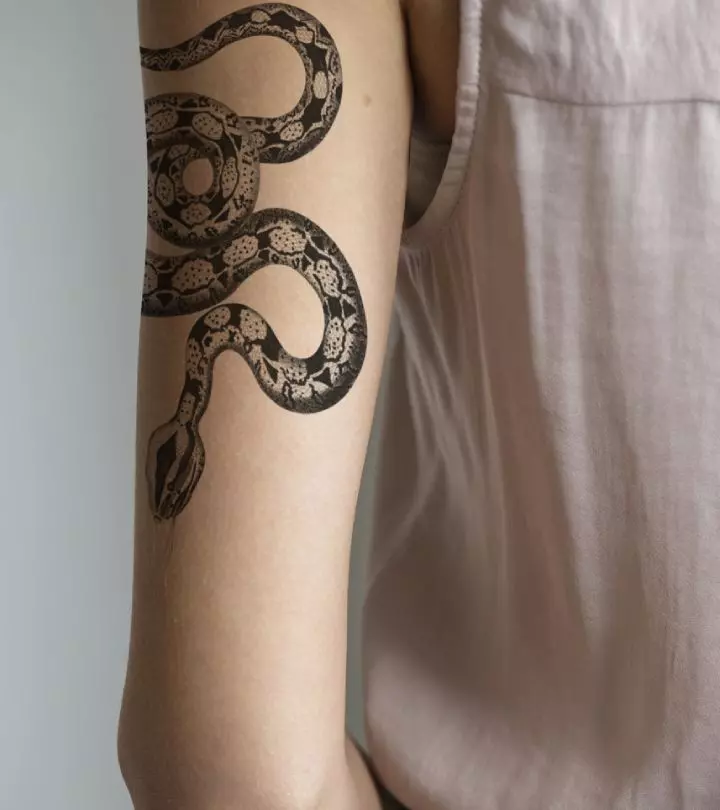
Image: iStock
Embarking on the tattooing journey is exciting, from fleshing out tattoo ideas to designing it with your chosen artist. But as you anticipate getting inked, you might wonder, how long does the actual tattoo process take? You may have heard varying accounts of tattoo sessions lasting a few hours to multiple sessions spanning several days to get an intricate tattoo. No matter if you want a small delicate tattoo design or a large detailed one, you have to discuss this with your professional tattoo artist beforehand to ensure that you are prepared to sit for however long to get the tattoo of your dreams. It is natural to wonder about the average time duration for getting tattoos, whether an intricate or simple design, especially with other plans on the same day. So, check out this article as we delve into the different factors influencing the duration of your tattoo experience, ensuring that you are well-prepared for the procedure.
In This Article
How Long Does It Take To Get A Tattoo?
The length and number of tattoo sessions depend on their size, complexity, and location with the duration ranging from a matter of minutes to many hours. Larger tattoos and more intricate designs may extend beyond this timeframe and need several sessions over days or even months. The process requires your active cooperation, minimal movement, and precise application to contribute to the timely completion of the task.
The first step is to decide the style of tattoo you want. There are many different styles and since this tattoo will be with you until you die, you should familiarize yourself with them. Then locate a few artists who specialize in that tattoo style.
Visit these artist’s studios and ask to see their portfolios of their past work, to ascertain if they can efficiently execute the procedure. This will result in the accuracy of the tattoo work. Again, the overall duration depends on the chosen tattoo design’s intricacy and size while following the tattoo artist’s guidelines to ensure a swift and effective process. Upon choosing an artist, schedule a consultation to discuss your ideas. Your artist will want to know about size and placement, and may also see the reference photos you have to understand what you are looking to get. With this information, the artist can then give you their best estimate of the amount of time your tattoo will take.
Next, comes the tattoo session, where the process involves cleaning the skin, applying a stencil, and using a needle to inject ink into the skin. Try to stay as relaxed as possible and avoid moving during the session for precise results. Once finished, the artist will promptly clean and secure the tattoo, marking the end of the session. Maintaining proper hygiene will ensure that you do not experience any infections.
After the artist cleans and bandages the fresh tattoo, follow the tattoo aftercare routine suggested by the artist to speed up the recovery time. It is best to avoid direct sunlight and strenuous activities immediately after getting inked. Start applying broad-spectrum sunscreen with SPF 50 or above, 2-4 weeks after getting the tattoo if spending time in the sun, and wear loose clothes during the healing process. Follow all additional instructions from your tattoo artist to avoid a tattoo infection.

The tattooing session can extend up to several hours, and you might need to consider the pace of the artist as well as your design before you choose to get it. Hence, it is necessary to be aware of the length of your tattoo session. Keep reading to learn more.
Why Is It Important To Calculate The Length Of A Tattoo Session?
Calculating the length of a tattoo session is crucial for efficient planning and execution of the tattooing process. Tattoo artists work at their own pace and timelines based on the complexity of the design and their schedule. Therefore, once you have booked your appointment and discussed your design requirements, the tattoo artist will be able to provide you with an estimate of the time needed to complete your tattoo. You might have to adjust your schedules to manage time and prevent unnecessary delays. This can help align your expectations and minimize potential disruptions. Moreover, knowing the duration of your tattoo session will also help you plan your day and allocate sufficient time for your appointment. It will also help you plan your budget, as some tattoo artists may charge on an hourly basis. Keep in mind that most large tattoos are broken up into multiple sessions over long periods. Let your artist know if you’d be more comfortable doing more than one session.
Efficient planning and time management also contribute to a smoother overall experience, enhancing client satisfaction. Whether it’s a small, quick tattoo or a more elaborate design, calculating the length ensures a smooth process, allowing you and the tattoo artist to make the most of the tattoo session.
Victoria A. Fraser, a blogger, shares her experience of getting her first meaningful tattoo, a daisy and the face of her snake. She writes, “I also adopted a corn snake named Lexicon and knew when I saw her cute face that I wanted a tattoo of her.” While talking about the duration, she mentions that one should always have something to occupy themselves as staring at the walls gets boring after a while. She writes, “My tattoo took 2.5 hours and I was suffering more from boredom than from pain. Thank god I had my phone and wifi to occupy myself (i).”
The length of the tattoo session is only one aspect of the tattooing process that dictates the duration, for there are also other factors involved. Take a look at the section below to know more.
Factors That Affect The Duration Of A Tattoo Session
The duration of a tattoo hinges on several key factors, as listed below. Keeping them in mind will allow you to have a fruitful discussion with your professional tattoo artist to achieve a seamless tattoo experience.
- Size Of The Tattoo
- Small Tattoos: Typically take as little as a few minutes to an hour or two to complete. as little as a few minutes to an hour or two to complete.
- Medium Tattoos: They may take 2-4 hours.
- Large Tattoos: May span multiple sessions, with each session lasting 3 hours or more.
- Color Of The Tattoo
Color tattoos demand additional time due to the intricate shading and color gradation required, as well as the fact that color tattoos require the skin to be fully saturated with pigment. On the other hand, black and gray tattoos tend to progress more swiftly, as you are not fully saturating the skin with pigment.
- Placement Of Your Tattoo
- Sensitive Areas: Tattoos on regions close to the bones, like the ribs, areas of the hand, or feet may require more time due to the meticulous work needed for precision.
- Complex Areas: Body parts such as the neck, fingers, and lower back can extend the duration of the process.
- Complexity Of The Design
Elaborate designs with fine details or intricate tattoos demand careful execution, contributing to a longer duration.
- Your Ability To Sit Still
Your ability to sit still significantly impacts the speed of the process and clear communication with the artist about your expectations and design complexity aids in accurate time estimation. Taking many breaks will cause your tattoo session to be longer.

While the above points are some of the most important factors that affect the duration of your tattooing process, there are some that affect the length of the tattoo itself. Check some of these considerations below.
Other Factors Influencing The Tattoo Session Length
In addition to size, color gradation, body placement, and other pivotal factors, the following are some of the other conditions that influence the length of a tattoo.
- Skin Type: Your skin type influences the tattoo process. Softer or more elastic skin may require additional time for precise application than taut skin; dry skin types can also affect the length due to the tough nature of the skin.
- Artist’s Skill: The expertise of the tattoo artist matters. Highly skilled tattoo artists may work more efficiently each session, and offer a more expansive design, thereby affecting the tattoo length.
- Preparation Time: Elaborate and intricate designs require more time to ensure precision. The level of detail and the presence of fine lines or shading can significantly impact the tattoo length.
- Scheduling Preferences: Some may prefer shorter sessions with more frequent visits, while others may opt for longer sessions with fewer visits. Your scheduling preferences can influence the overall time it takes to complete a tattoo.
- Pain Tolerance Level: Individual pain tolerance varies between individuals, and you may need more breaks or shorter sessions due to discomfort. This can affect the length of a tattoo, especially for larger pieces.
- Type Of Equipment: The type of tattoo machine and technology used by the artist can impact the efficiency of the process. Advanced equipment may allow for faster and more precise work, potentially affecting the overall length of the tattooing session.
The duration of your tattoo journey depends on various factors. From tattoo size and color choices to the artistry of the tattooist and the resilience of your skin, each element contributes to the time investment. Clear communication and cooperation with your artist play a decisive role in ensuring your tattoo is up to your satisfaction. Whether opting for a small, black-and-gray design or a colorful masterpiece, understanding these factors empowers you to navigate the tattooing process efficiently. Remember, the artistry involved demands time and precision.
Follow the proper aftercare instructions of your artist to ensure that the ink remains vibrant throughout. If you have any concerns or questions about getting a basic tattoo, talk to your tattoo artist and a medical professional, if needed, before scheduling the appointment.
Frequently Asked Questions
How long does it take to get a tattoo sleeve?
A sleeve tattoo’s duration varies based on design complexity and size. Completing a full sleeve may require multiple sessions spanning weeks or months, with each session lasting 4-6 hours.
Is a 6-hour tattoo session long?
Yes, a 6-hour tattoo session is considerably longer, indicating a complex tattoo design. The duration of the tattoo session depends on the size of the tattoo, along with other factors such as placement and colors used.
How long does a word tattoo take?
The duration of a single-word tattoo depends on its size and intricacy. On average, a small to medium-sized word tattoo may take about 15 minutes or one to two hours depending on size and font style 1-2 hours to complete.
How long does a forearm tattoo take?
A forearm tattoo’s duration depends on size and the design’s complexity. A small to medium-sized design may take 2-3 hours, while larger or intricate tattoos can extend to 4-6 hours or multiple sessions over weeks.
How long does a shoulder tattoo take?
The duration of a shoulder tattoo varies based on the size and complexity of the design. On average, a small to medium-sized shoulder tattoo may take 1-3 hours to complete, but it may take longer. The closer the needle gets to the bone, the more it hurts; hence, a lot of it depends on individual pain tolerance.
How long do spine tattoos take?
Simple spine tattoos may take 2-4 hours, taking into account the design and the placement, as it may be more painful for some to get a tattoo on the spine. Other intricate tattoos may take 6-8 hours or several sessions over 2-3 weeks.
How long does a full back tattoo take?
A full back tattoo will take several sessions over 1-2 weeks or months. The sessions may last for more than 6 hours, depending on the design, the colors chosen for the tattoo, and your pain threshold.
Key Takeaways
- Getting a new tattoo can generally take as little as 15 minutes or up to many hours, depending on the size, placement, and design of the tattoo.
- The duration of the tattoo process may increase depending on the type of style you choose.
- The location of the body plays a crucial role as tattoos on complex areas require additional time to avoid any mishaps.
- Your pain threshold also decides the amount of time it takes for the tattooing process to complete
- It is best to reach out to a skilled artist to avoid any issues that stem from amateur tattoos.

Image: Stable Diffusion/StyleCraze Design Team
Are you a fan of sleeve tattoos but feeling unsure due to the time commitment and number of sessions involved? Well, get your appointment as the video below gives you the best tips for a seamless experience. Check it out!
Personal Experience: Source
StyleCraze's articles are interwoven with authentic personal narratives that provide depth and resonance to our content. Below are the sources of the personal accounts referenced in this article.
(i) What Should I Know Before Getting My First Tattoo?https://victoriafraise.medium.com/what-to-know-before-getting-your-first-tattoo-840d3970deb5
Read full bio of Scott Terry
Read full bio of Madhumati Chowdhury
Read full bio of Gazala Firdos Ansari





